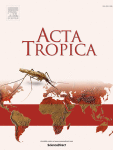Schistosomiasis is a zoonotic parasitic disease caused by trematodes of the genus Schistosoma. Schistosoma japonicum (S. japonicum), Schistosoma mansoni (S. mansoni), and Schistosoma haematobium (S. haematobium) are pathogenic in humans, of which S. japonicum is primarily found in Southeast Asian countries, such as China and Philippines (Colley et al., 2014; LoVerde, 2019; Xiang et al., 2022). Adult S. japonicum worms usually parasitize in the host’s portal vein and mesenteric venous system. Their eggs can enter the liver through the bloodstream, causing inflammation, granulomas, and fibrous tissue hyperplasia, and eventually leading to liver cirrhosis (Chen et al., 2019). Drug chemotherapy is the mainstay treatment for this disease (Huang et al., 2020); praziquantel (PZQ) has many advantages, such as being a safe and affordable orally administered drug, and has become the drug of choice (Colley et al., 2014). Although schistosome eggs are not sensitive to PZQ, the drug has been used in clinical practice to treat liver damage, including liver fibrosis, caused by schistosome eggs. Recent progress in understanding the mechanism of PZQ suggests that liver damage, including fibrosis, can be effectively alleviated and treated with PZQ (Fang et al., 2020; Liu et al., 2019a; Ma et al., 2018). However, the molecular mechanisms underlying the effect of PZQ on the liver after S. japonicum infection remain unclear.
The competing endogenous RNA (ceRNA) hypothesis depicts a regulatory mechanism for post-transcriptional regulation (Paraskevopoulou and Hatzigeorgiou, 2016; Thomson and Dinger, 2016; Wang et al., 2019). A common occurrence is the long noncoding RNA (lncRNA), which acts as a molecular sponge, competitively binding to microRNA (miRNA) on the same target site as that of messenger RNA (mRNA), adsorbing and separating miRNA from the target mRNA, and eventually affecting the translational of mRNA (Thomson and Dinger, 2016). Previous research has demonstrated that the genes associated with the inflammation and apoptosis signaling pathways were upregulated in the liver of the host after S. japonicum infection (Zhao et al., 2021). Another study (Cai et al., 2013) indicated that miRNAs might play various regulatory roles in the hepatic pathology of S. japonicum-infected mice. Moreover, another study identified thousands of novel lncRNAs associated with the parasitic pathogenesis in the liver and spleen of S. japonicum-infected mice (Xia et al., 2020). On the other hand, evidence suggests that PZQ treatment could affect the expressions of genes reportedly associated with drug resistance in S. japonicum (You et al., 2013) and S. mansoni (McCusker et al., 2021). It was reported (El-Taweel et al., 2022) that PZQ treatment can lead to significant alterations of miR-223 and miR-146b in the serum and liver of mice with S. japonicum infection. It was found that PZQ treatment induced the downregulation of immune responses and cell cycle genes in the blood of children infected with S. haematobium (Labuda et al., 2020). Another study (Kresina et al., 1993) indicated that PZQ treatment has a reversal effect on fibrosis-related gene expression in the liver of S. japonicum-infected mice. However, none of the existing studies performed whole transcriptome analyses on the alterations of liver genes. Moreover, the interactions of miRNA, mRNA, and lncRNA underlying the mechanism of the effects of PZQ treatment on the liver after S. japonicum infection have not been elucidated.
This study aimed to explore the gene expression changes in the host liver after PZQ treatment for S. japonicum infection and investigate the transcriptional regulation of the hub gene in this process. The weighted correlation network analysis (WGCNA) method was adopted to establish a co-expression network, and hub genes were selected based on the node’s connectivity and gene functions. The specific binding site of miR-130b-3p to the hub gene Cyp4a14 3′UTR was predicted by ceRNA interaction relationships and verified using dual luciferase reporter assay. This study could provide valuable information for further research on the host liver response to PZQ treatment and could assist in diagnosis and assessing treatment efficacy.





Add Comment